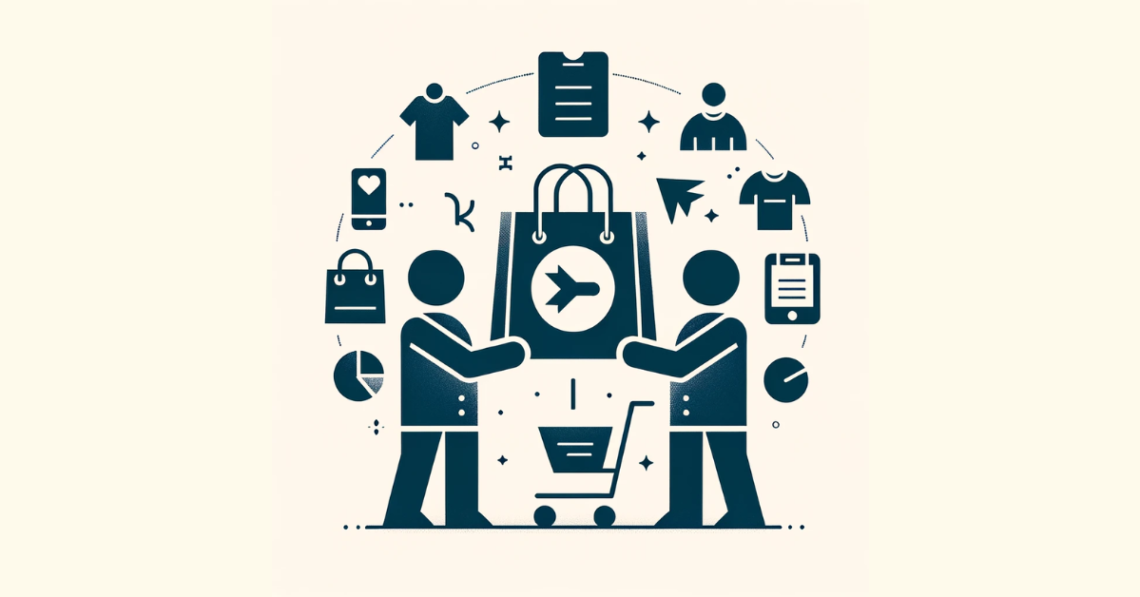Introduction
Have you observed a growth in brands selling directly to customers, bypassing established retailers? This is the universe of Direct-to-Customer (D2C) organizations, and they’re making a splash by manufacturing further associations with their crowds. In any case, how are they getting along? Let’s delve into the secrets of their intriguing methods.
Overview of the D2C Model
Imagine buying your favorite coffee directly from the roaster, or trendy clothes straight from the designer. That’s the essence of D2C. These brands cut out the middleman, permitting them to control the whole experience, from item creation to client support. This immediate association opens a unique chance to develop deep ties with their crowd.
The Significance of Audience Engagement
In a crowded marketplace, simply having a good product isn’t enough. D2C brands understand that engaging their audience is key. It’s not just about selling stuff. It’s about making a group of loyal customers who feel connected. Happy customers tell their friends good things about your company and buy more themselves.
Read Also: Omnichannel Mastery: Leveraging SwilERP for Business Growth
Understanding Buyer Personas
But how do D2C brands reach their target audience? The secret lies in the buyer’s personas. Imagine a detailed portrait of your ideal customer, including their demographics, interests, and buying habits. By creating these personas, D2C brands can tailor their messaging and strategies to resonate with individual.
Defining Buyer Personas for D2C Brands: Picture a young, environmentally conscious woman passionate about sustainable fashion. This persona might influence a D2C clothing brand to showcase eco-friendly materials, highlight fair labor practices, and partner with green influencers.
The Role of Buyer Personas in Personalized Marketing: Personas guide D2C brands in crafting personalized experiences. They allow social media ads, emails, and product ideas that feel personal to each shopper. This customized attention makes people feel seen and important. It builds a deeper bond so customers are more devoted and want to buy more.
Beyond Personas
While personas are a powerful tool, D2C brands also leverage other engagement strategies:
1. Storytelling: Sharing the brand’s story, values, and mission creates emotional connections with the audience.
2. Community Building: Fostering online communities through forums, social media groups, and user-generated content allows customers to connect with each other and the brand.
3. Interactive Experiences: Quizzes, polls, and contests encourage participation and gather valuable customer insights.
4. Exceptional Customer Service: Prompt and personalized responses to inquiries build trust and positive brand associations.
By understanding their audience and implementing these strategies, D2C brands are rewriting the rules of engagement. They don’t just sell stuff. They make groups of faithful customers who feel connected. This makes customers want to stay loyal and feel good about the brand – not just buy something once. This interesting way of selling is changing shopping and how we feel about brands. And it’s only starting.
Personalized Experiences
When Knowing Your Customers Pays Off
Imagine being welcomed into a store by name, recommended clothes you’ll genuinely love, and offered exclusive deals based on your preferences. That’s the power of personalized experiences. By leveraging customer data and building detailed buyer personas, businesses can:
Tailor products and services
Analyze purchase history, interests, and needs to create offerings that truly fit your audience. A music streaming service, for example, might suggest playlists based on a user’s listening habits, while a clothing retailer could recommend styles based on previous purchases.
Craft targeted marketing efforts
No more shouting into the void! Use data to segment your audience and deliver relevant messages. This means showcasing hiking gear to outdoor enthusiasts, not fashionistas. Personalized email campaigns, targeted social media ads, and relevant website content all contribute to a more impactful experience.
Social Media Engagement
Building Relationships in the Digital Space
Social media sites give tons of info about who you want to reach. You can use them to chat with people directly, make connections, and grow a dedicated group.Here’s how:
1. Utilize platforms to connect: Choose platforms frequented by your buyer personas and actively engage there. Post helpful stuff, answer questions, and join related talks.
2. Partner with influencers: Collaborate with individuals who resonate with your target audience.If they vouch for you, more people can become aware of and interested in your brand.
3. Harness the power of user-generated content: Encourage your audience to create and share content related to your brand. This creates a feeling of people bonding, gains trust, and provides useful information.
Remember, being personal isn’t just about tech – it’s about caring and getting people. By really learning what makes your customers tick, what they like, and what they need, you can make real connections. This makes people engage more, stick to your brand, and want to buy from you. And that brings more success.
In a nutshell:
- Understand your audience by leveraging data and building buyer personas.
- Tailor products, services, and marketing efforts to individual needs and preferences.
- Use social media sites to reach your audience, bond with them, and grow a community spirit.
- Remember, personalization is about empathy and understanding your audience on a deeper level.
Exceptional Customer Service
Imagine encountering a problem at 3 AM. With 24/7 support tailored to your specific needs, you receive immediate assistance, not a frustrating automated message. This one-on-one way of quickly and fully answering worries gains trust and makes people see your brand positively.
But going above and beyond expectations truly sets you apart. Surprising and delighting customers with unexpected gestures, like a handwritten thank-you note or a complimentary upgrade, leaves a lasting positive impression. These little tries make people feel bonded and set your brand apart from others.
Community Building
People want to feel connected. By getting your customers talking together, you build a community around your brand. Online forums, social media groups, or even in-person meetups let customers interact, share stories, and feel important. This makes happy customers tell others about you. They become fans who spread the word naturally.
Remember, community building is a two-way street. Actively listen to your customers’ concerns and suggestions, responding promptly and transparently.This shows you care about their happiness and makes the relationship with your brand and its followers stronger.
Sustainability Efforts
Consumers are increasingly mindful of environmental and social issues. Aligning your brand values with their concerns demonstrates authenticity and shared responsibility. Think about using sustainable ways of doing business – like eco-friendly shipping boxes, responsible suppliers, or donations to charity. These kinds of efforts align with customers who care about values. It creates a shared goal.
Furthermore, use your sustainable practices as engagement tools. Teach your customers about what you’re doing to be sustainable, like recycling or using less plastic. Get them to join in by rewarding eco-friendly choices. This way of working together shows you care. It builds loyalty and makes people see your company as responsible.
Authentic Storytelling
The foundation of authentic storytelling lies in understanding your buyer’s personas. Who are you trying to reach? What do they want out of life? What worries them or gets them excited? What makes them tick? When you understand your customers deeply, you can tell stories that connect with how they think and feel.
Instead of generic product pitches, focus on sharing relatable stories.Show real people using your product and how it improved their life. Show how your company’s purpose and values help real buyers. This shows it’s not just about profits.
Influencer Partnerships
Influencer marketing can work well, but the person has to match what you stand for and appeal to your customers. Authenticity is key here. Avoid celebrities who simply endorse anything for a paycheck. Don’t just pick big names. Find people who genuinely use and love your product already. Choose influencers who share your buyers’ values and life experiences.
Micro-influencers, with their smaller but highly engaged followings, can often be even more effective. They give a more real and personal link so you can connect with specialized groups and gain trust through true suggestions.
Personalized Customer Experiences
The power of storytelling goes beyond just crafting compelling narratives. It also means making each customer feel special. Using data about what they like, you can customize messages and product suggestions for each person. This shows you see them as individuals, not just sales numbers.
For example, imagine sending an email with personalized product suggestions based on a customer’s past purchase history and browsing behavior. This not only feels more relevant and engaging but also increases the likelihood of a conversion.
User-generated and Interactive Content
Imagine your customers becoming brand ambassadors, crafting compelling stories and visuals that resonate with others. By understanding your buyer personas – the unique characteristics and interests of your ideal customers – you can spark this content creation engine.
Here are some strategies to ignite the flame:
- Run contests and challenges: Encourage photo submissions, creative writing prompts, or design competitions related to your brand or products. Offer enticing prizes to motivate participation.
- Host live Q&A sessions: Address frequently asked questions and engage in real-time dialogue with your audience. This helps people feel they’re part of a group and have a relationship.
- Create user-friendly tools: Provide intuitive platforms or templates for users to contribute content easily, such as product review sections or social media filters.
- Recognize and reward contributions: Highlight user-generated content on your website or social media channels. Say thanks and give perks to keep up the energy.
- By implementing these strategies tailored to your buyer personas, you’ll attract diverse voices and perspectives, enriching your brand narrative and attracting new audiences.
Read Also: Exploring the complexities of Point of Sale (POS) Solution
Interactive Content for Enhanced Engagement
Static content can sometimes feel passive. Content that gets people taking part, on the other hand, asks them to get involved. This increases how much they pay attention and connect with the information.
Here are some examples to explore:
- Quizzes and polls: Gather valuable insights while educating and entertaining your audience.
- Product configurator: Allow users to personalize products virtually, tailoring their experience.
- Interactive infographics: Present complex information in an engaging and visually appealing manner.
- Augmented reality (AR) experiences: Overlay digital elements onto the real world, showcasing products in a unique and interactive way.
These kinds of content that get users participating do more than just give them information. They make for fun, interesting times that get users to check things out and feel good about your brand.
Conclusion
By adding things made by users and ways for users to join in on your online plans, you can grow a group of followers who get involved and keep coming back.Remember:
- Focus on your buyer personas: Tailor your initiatives to their interests and preferences.
- Emphasize authenticity: User-generated content adds a genuine voice to your brand.
- Embrace interactivity: Make content people can interact with. This leaves a real impression and boosts learning.
This move to hands-on stuff shows a big change in what buyers want. People today care about realness and connecting. Brands that go with this shift to participation will gain loyalty. They’ll come out ahead online as things keep evolving.
As technology continues to advance, expect further innovations in user-generated and interactive content. The future holds exciting possibilities for brands and consumers alike to connect, collaborate, and create meaningful experiences together.








